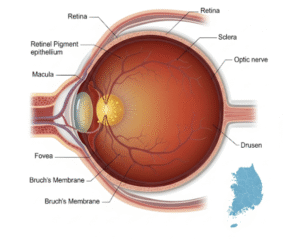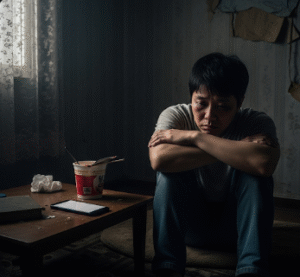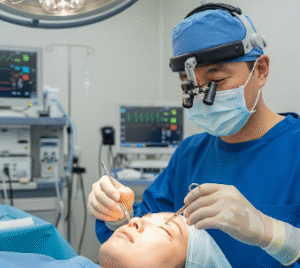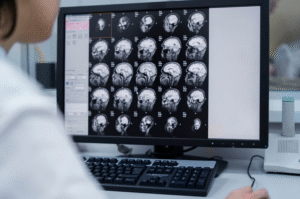What it is
Pelvic lymph node dissection (PLND) is a surgical procedure in which lymph nodes from the pelvic region are removed for examination or treatment. It is often performed during surgery for gynecologic cancers (such as cervical, endometrial, ovarian, or vulvar cancer) or urologic cancers (such as prostate or bladder cancer).
The main goal is to determine whether cancer has spread to the lymph nodes and, in some cases, to reduce tumor burden. In Korea, PLND is performed in specialized oncology centers using open, laparoscopic, or robotic-assisted techniques, ensuring precision and faster recovery.
➡️ Key facts about pelvic lymph node dissection:
- Provides crucial staging information for cancer treatment planning
- Can be therapeutic by removing cancerous lymph nodes
- Often performed alongside cancer surgeries like hysterectomy or radical prostatectomy
Why it’s done
PLND plays a critical role in diagnosing and treating cancers that spread through the lymphatic system.
✔️ Medical reasons include:
- Staging: Determines if cancer has spread beyond the primary site
- Prognosis: Helps doctors assess survival outcomes
- Treatment planning: Guides the need for chemotherapy or radiation
- Therapy: Removing affected lymph nodes may help control cancer spread
✔️ Benefits of PLND:
- Provides accurate cancer staging
- Helps tailor treatment to individual patients
- May improve long-term outcomes when combined with other treatments
Alternatives
Although PLND is highly effective, alternatives or complementary methods may sometimes be used.
🔹 Sentinel lymph node biopsy (SLNB):
- Less invasive procedure where only the first draining lymph node(s) are removed
- Reduces risk of complications compared to full PLND
- Commonly used in early-stage gynecologic cancers
🔹 Imaging techniques:
- MRI, CT, or PET scans can suggest lymph node involvement
- Useful for screening but less accurate than surgical removal
🔹 Observation:
- In frail patients or those with early, low-risk cancers, PLND may be skipped
Preparation
Proper preparation ensures safe and effective surgery.
➡️ Medical preparation:
- Full cancer workup including biopsy and imaging
- Blood tests and anesthesia evaluation
- Bowel preparation if required for abdominal surgery
➡️ Personal preparation:
- Fasting 6–8 hours before surgery
- Stopping blood-thinning medications if instructed
- Preparing for hospital stay of a few days
➡️ Mental preparation:
- Understanding the role of PLND in staging and treatment
- Preparing emotionally for potential diagnosis of advanced disease
- Counseling available in Korean hospitals for cancer patients and families
How it’s done
Pelvic lymph node dissection in Korea is performed using modern, minimally invasive techniques when possible.
✔️ Step 1 – Anesthesia
- General anesthesia administered for pain-free surgery
✔️ Step 2 – Surgical access
- Open surgery: Larger abdominal incision made (less common now)
- Laparoscopic surgery: Small incisions and camera used for precision
- Robotic-assisted surgery: Provides 3D visualization and highly precise movements
✔️ Step 3 – Removal of lymph nodes
- Lymph nodes in pelvic regions such as the obturator, external iliac, internal iliac, and common iliac nodes are carefully dissected
- Nodes sent to pathology for microscopic analysis
✔️ Step 4 – Completion
- Bleeding controlled, incisions closed with sutures or glue
- Drain may be placed temporarily to prevent fluid accumulation
✔️ Duration:
- Surgery lasts 2–4 hours, depending on complexity and whether combined with other cancer surgery
- Hospital stay: typically 3–7 days
Recovery
Recovery from PLND depends on surgical approach and overall health.
➡️ Immediate recovery:
- Pain or soreness in the lower abdomen
- Temporary catheter may be used to support bladder function
- Monitoring for infection or bleeding
➡️ Physical recovery:
- Return to light activities within 2–4 weeks (laparoscopic/robotic)
- 6–8 weeks for full recovery after open surgery
- Possible side effects: leg swelling (lymphedema), infection, or nerve irritation
➡️ Emotional recovery:
- Relief from having accurate cancer staging
- Anxiety possible if cancer spread is confirmed
- Counseling and family support encouraged in Korean hospitals
➡️ Key recommendations:
- Gentle walking to improve circulation and prevent clots
- Wearing compression garments if lymphedema risk is high
- High-fiber diet and hydration to prevent constipation
- Attending follow-up appointments for pathology results and further planning
Treatment option in Korea
Korea is a leader in cancer surgery and precision oncology, offering world-class pelvic lymph node dissection.
✔️ Hospital facilities:
- Equipped with robotic surgery systems (Da Vinci) for precise PLND
- Specialized gynecologic and urologic oncology centers
- On-site pathology labs for rapid analysis of lymph nodes
✔️ Medical expertise:
- Surgeons highly trained in both open and minimally invasive PLND
- Experience with complex cancer cases involving multiple organs
- Multidisciplinary tumor boards ensure coordinated treatment planning
✔️ Postoperative care:
- Integration of rehabilitation, nutrition, and physiotherapy
- Lymphedema prevention and management programs
- Psychological and emotional support for patients and families
✔️ Cultural aspect:
- Korean healthcare emphasizes early detection, comprehensive treatment, and patient dignity
- Family involvement is common in treatment planning and recovery
- Recovery centers similar to Sanhujoriwon support cancer patients with rest, nutrition, and holistic care
➡️ Highlight: Pelvic lymph node dissection in Korea provides accurate staging, advanced surgical precision, and holistic recovery programs, helping patients receive world-class cancer treatment while ensuring long-term quality of life.













